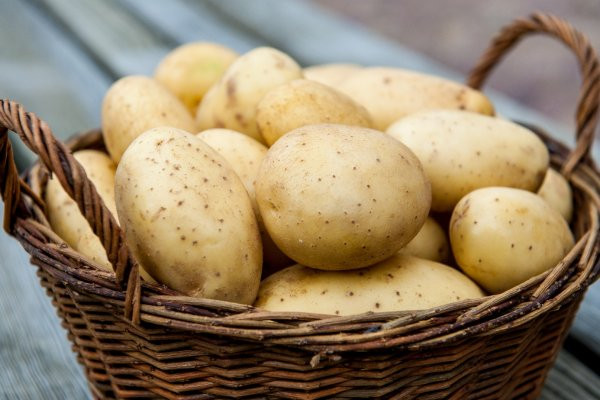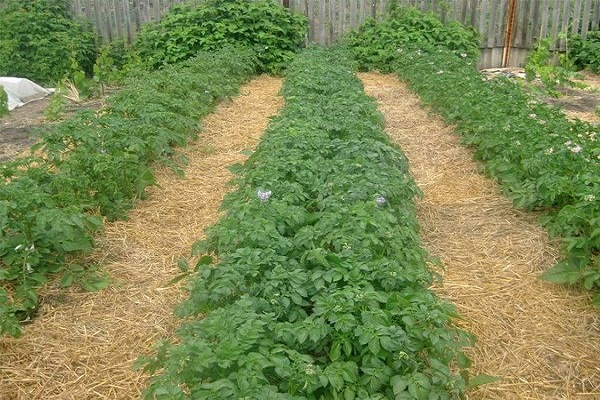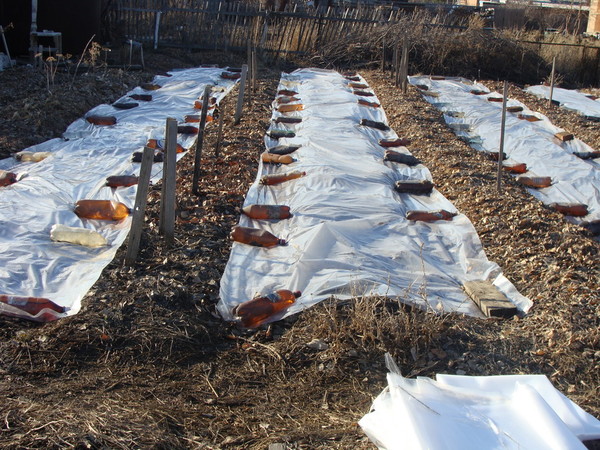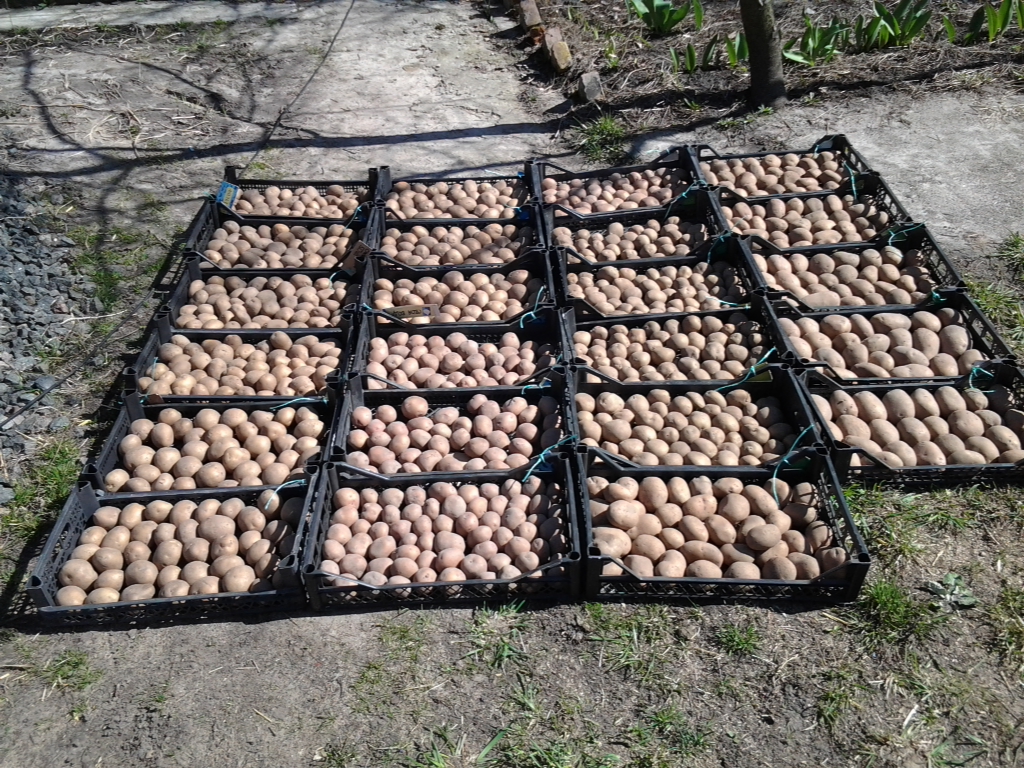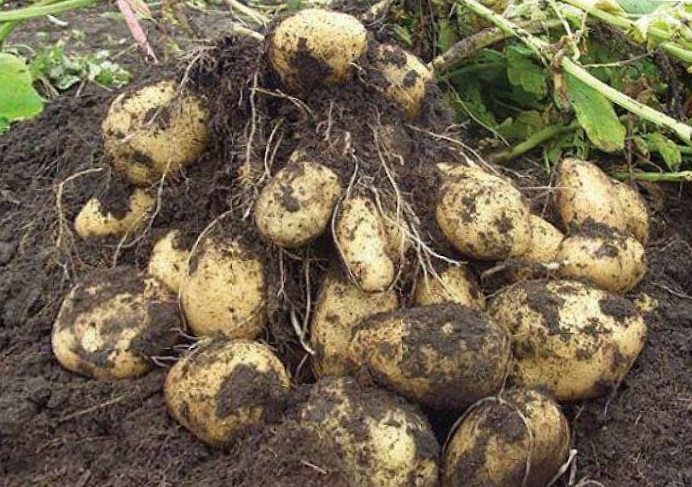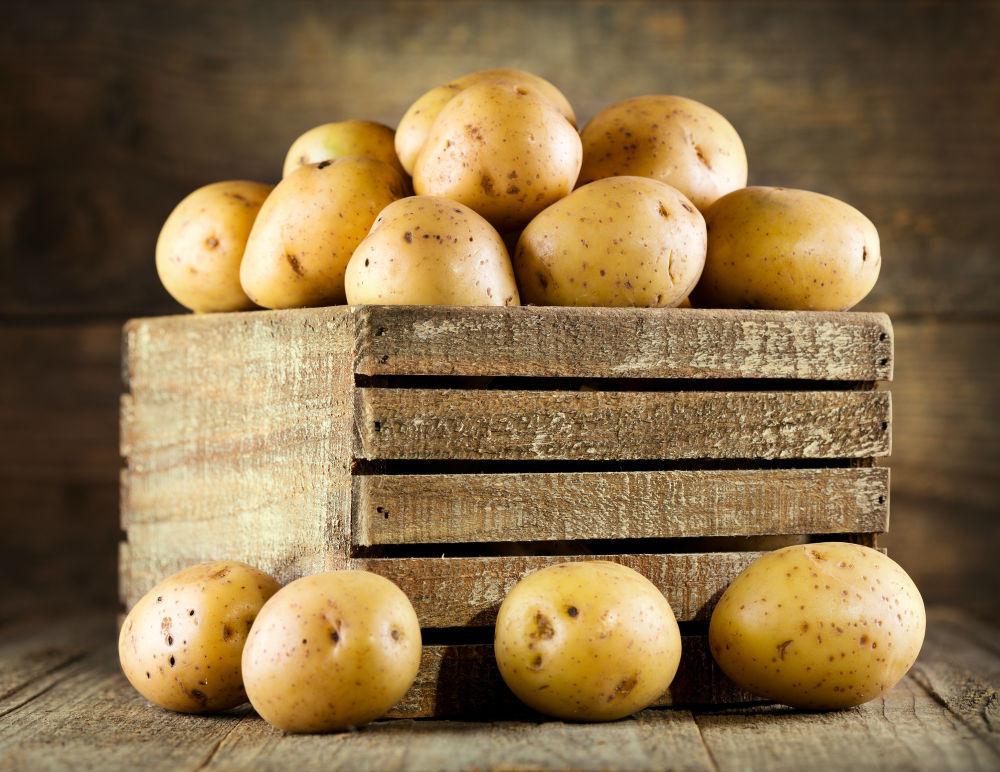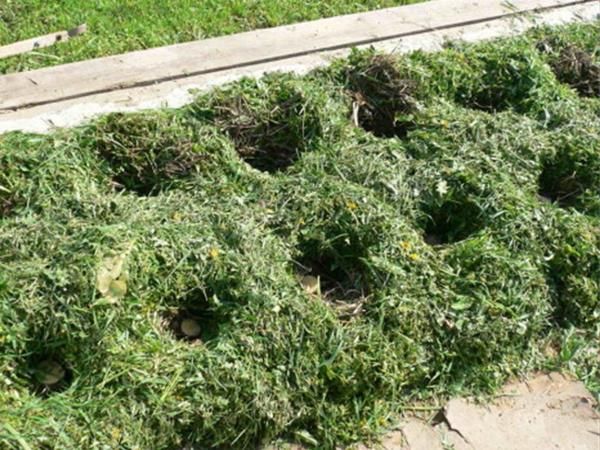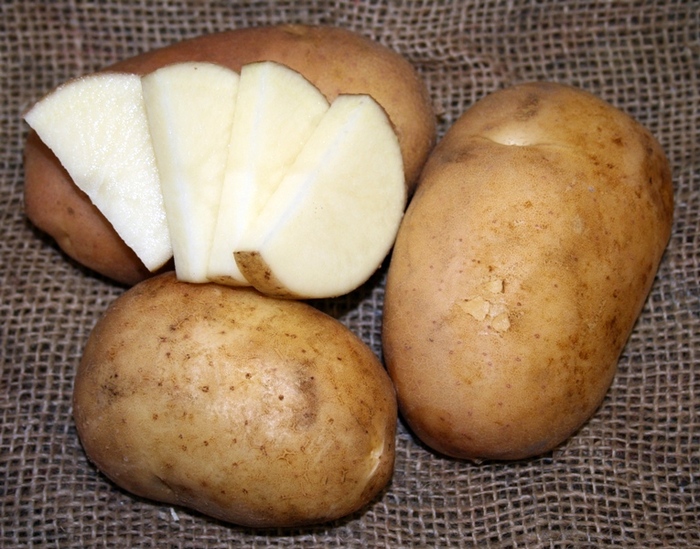Content:
Potatoes are a very common crop of the Solanaceae family. Its homeland is considered to be South America, from where it was brought to Europe in 1551 by the Spanish priest and humanist Cieza de Leon. Over the next few centuries, potatoes spread throughout most countries in the European region, including Russia, where its active cultivation began only in the middle of the 19th century.
Basic information about culture
Potatoes are an annual herb. A potato bush up to 1 meter high consists of erect ribbed stems covered with intermittently unpaired pinnately dissected leaves. The inflorescence of potatoes is a curl, consisting of flowers of white, pink or purple color. The fruit is a green polyspermous berry, no more than 20 mm in diameter. The main commercial products for which this crop is grown are tubers (stolons) - modified (thickened) underground stems, in which nutrients such as starch, proteins, vitamins are deposited during the growing season of the crop. Potatoes are propagated by tubers and seeds.
The area of cultivation of this culture in Russia covers almost all of its territory: the Middle zone (not only Moscow and the Moscow region, but all areas of the Non-Black Earth Region), the Urals, Siberia, the Far East, southern regions, the Caucasus.
Potatoes are grown on soils with high fertility: an optimal soil structure, a high level of nutrients and humus, a slightly acidic or close to neutral reaction of the environment. In the technology of cultivation of potatoes, along with methods of tillage, planting and measures to combat pests and diseases, an important place is occupied by such an event as mulching. It is about him that will be discussed in this article.
What is potato mulching
Mulching potatoes - applying a layer of covering material called mulch to the surface of the soil of the crop planting.
The following materials are used as mulch:
- Straw or hay;
- Last year's dry foliage;
- Peat or compost;
- Cardboard;
- Sawdust;
- Agrofibre or dark and dense plastic wrap.
Mulching purposes
Planting potatoes under mulch is done in order to:
- Reduce moisture evaporation;
- Preserve the heat accumulated by the soil when a prolonged cold snap follows warm weather;
- Minimize the risk of plants overheating in extreme heat;
- Prevent the growth and development of weeds;
- Enrich the soil with nutrients when mulch decomposes;
- Prevent the formation of a soil crust, which impairs air access to the crop root system and increases moisture evaporation;
- Allows you not to carry out such a rather laborious procedure as hilling.
Preparing the site for mulching
Before mulching potato planting, you must carefully prepare the soil of the site. The preparation of the site for potatoes for mulching is carried out as follows:
- When placed after the early-harvested vegetables, the plot is loosened and an intermediate crop is sown on it - winter or spring rape, oil radish. In the future, with the onset of stable cold weather, the green mass of the catch crop is mown, and the site is dug up, while introducing a full dose of potash and phosphorus fertilizers under the digging;
- When harvesting the predecessor, the site is dug up or plowed up late, while applying a full dose of phosphorus and potassium fertilizers;
- When spring comes and the soil dries up, the site is loosened, while applying nitrogen fertilizers;
- If the soil is dry, and precipitation is not predicted in the next few days, the site is thoroughly watered during the day after planting and moisture is allowed to be absorbed into the soil, after which it is loosened again.
It remains to plant potatoes on the prepared area and mulch the planting in one of the ways described below.
The main methods of mulching potatoes
Depending on the type of mulch used, the most commonly used mulching methods in practice are:
- Mulching with straw;
- Peat mulching;
- Mulching with cardboard;
- Mulching with agrofibre or thick black film.
Mulching with straw, hay
Mulching potatoes with straw is one of the easiest and most affordable ways for most summer residents. It is produced as follows:
- In the prepared area, grooves are cut or holes are dug with a depth of 5-6 cm. The row spacing is made at least 60 cm;
- Compost or rotted manure is introduced into the holes or furrows;
- Potato planting material in a row is placed with a step of 30-35 cm and sprinkled with soil;
- The entire planting is covered with a layer of straw 15-20 cm thick;
- When potato shoots appear and rise above the straw level, the mulch layer is renewed.
Mulching with organic fertilizers: peat, compost, sawdust
Lowland peat or ready-made loose compost is used for mulching. After planting, the bed is covered with a layer: 6-8 cm thick - for peat or 4-6 cm - compost. As the mulch decays and settles, the layer is renewed. After harvesting, the mulch is plowed, due to which these materials are included in the cycle (cycle) of soil enrichment with humus.
When using sawdust as mulch, its layer should be no more than 3-4 cm. It is not recommended to use fresh and already rotted sawdust. For mulching, the sawdust is dried and weathered for some time and only then evenly cover the planting with them. Since the decomposition of sawdust consumes soil nitrogen, during mulching they add additional nitrogen fertilizers at the rate of 200 g. urea per 1 kg of sawdust.
Mulching with cardboard
When mulching with cardboard, choose dense unpainted sheets of three or five-layer corrugated cardboard, cover the previously dug and fertilized area with them. The sheets themselves are sprinkled with earth around the perimeter or applied with bricks. Then, according to the planting scheme, cross-shaped cuts are made in cardboard, and the germinated planting material - tubers with short green shoots - is planted in the soil under them. Then the cardboard is covered with a layer of straw, dry foliage or other available material on top. The emerging seedlings make their way through the slot in the cardboard and the layer of the top mulch much earlier than on plantings that are not covered in this way.
Potatoes of early and ultra-early varieties are grown under cardboard, planting the tubers in the soil that has just thawed and slightly warmed up.
Planting potatoes under film
For this method of mulching, a dense and elastic dark film or agrofibre is used. After preparing the soil, the film is laid on its surface, the edges are sprinkled with earth. According to the planting scheme, round holes are made in the film (agrofibre). Then, tubers sprouted in advance are planted in the soil under these holes.
Under agrofibre (film), planting early potatoes at the very beginning of spring is relevant. In addition, this method of mulching is used when they are going to plant ultra-early varieties.
Diseases and pests
Potatoes under the covering material are practically not affected by diseases. The situation is different with pests. Covering materials used for mulching can attract pests such as:
- Rodents - straw mulched plantings are often a haven for small rodents. The danger is that a mouse that has settled under the mulch, making holes in the ground, gnaws at the tubers planted in the ground;
- May beetle larvae - when using humus, plantings are often infected with beetle larvae. This pest gnaws cavities in the planted tubers and settles there. The damaged tuber rots, and the seedling dies;
- Medvedka - in humus brought from another site, such a dangerous pest as a bear is often found. It damages tubers planted in the ground, gnaws at their roots;
- Slugs - the film cover on the potato planting contributes to high humidity under it, which attracts slugs, which damage the leaves of seedlings, tubers.
Pest control measures
- To combat rodents, poisoned baits are used that are laid out along the perimeter of the site;
- In order to prevent infestation of the site by the larva of the May beetle, when humus is introduced, it is sieved and sprayed with insecticides such as Bazudin, Antichrushch, Aktara, Zemlin.
- From the bear, the tubers are treated with such preparations as "Makism", "Prestige";
- To fight slugs, before planting the tubers in the soil, it is treated with drugs such as "Thunderstorm" or "Meta". Also, planting is sprayed against slugs with a solution of ammonia with water in a ratio of 1: 6.
The advantages of mulching potato plantings are numerous: potatoes grow faster and better under mulch, the soil does not dry out and does not overgrow with weeds, potatoes are less damaged by diseases and pests, which makes not only the potato plantation, but the whole vegetable garden cleaner and healthier.
